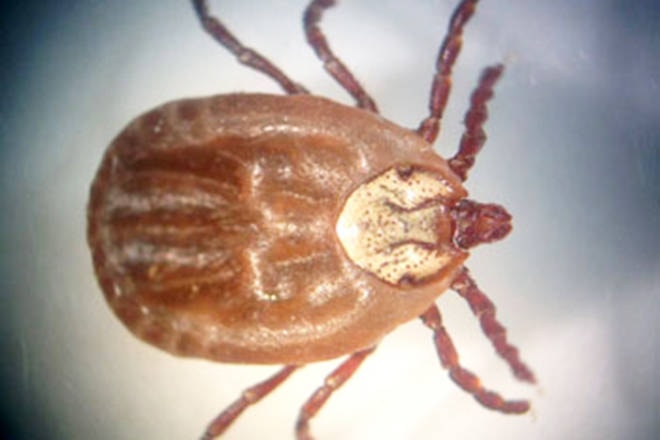As the weather warms, people across Interior Health will be spending more time outdoors in tall grass or wooded areas and this means an increased chance of getting tick bites.
Ticks are small bugs that feed on the blood of humans and animals and can sometimes transmit disease.
“Ticks are most often found in tall grass and wooded areas, so covering up before you head outdoors and checking for ticks on yourself, your children, and your pets after being outdoors, are simple things that go a long way to prevent tick bites,” said Dr. Silvina Mema, Interior Health Authority medical health officer.
The most common tick species in the region is the wood tick (Dermacentor andersoni), which is not known to carry the Lyme disease bacteria. The wood tick can carry other diseases such as Rocky Mountain spotted fever, although it is very rare. In addition, some ticks also have toxins that can cause tick paralysis, a condition resulting in temporary muscle weakness and paralysis until the tick is removed.
Less than one per cent of Ixodes ticks in B.C. carry Lyme disease. The tick species that carries Lyme disease (Ixodes pacificus or Ixodes angustus) is more common in the coastal areas of B.C., but may also be present in some areas within Interior Health. In addition to fever, headache, and muscle pain, people infected with Lyme disease will often develop a rash that looks like a bull’s eye target and expands from the site of the tick bite.
“If you find a tick on yourself, a family member, or pet, wear gloves and gently remove it,” said Mema.
“Use needle-nose tweezers to gently grasp the tick close to the skin and pull the tick straight out without squeezing. After removal, clean the area with soap and water. Try to save the tick in a sealed container with a cotton ball soaked in a bit of water and record the date of the bite. If you have concerns or need assistance removing a tick, please contact your family doctor or visit a walk-in medical clinic.”
All tick bites should be cleaned, as infection can occur whenever there is a break in the skin. Most tick bites do not result in illness; however, it is important to watch for signs of tick-transmitted illnesses. Signs of many tick-borne infections can be quite similar and include fever, headache, muscle pain, and rash. Anyone who experiences a bulls-eye rash or other symptoms should see a doctor as soon as possible.
More information is available at www.interiorhealth.ca/YourEnvironment/CommunicableDiseaseControl/Pages/Ticks.aspx



